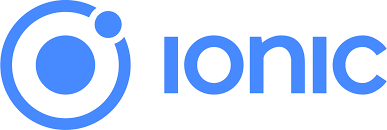
In the dynamic landscape of app development, where user experience reigns supreme, choosing the right framework is paramount. Among the myriad of options available, Ionic stands tall, offering a robust platform for crafting stunning and feature-rich applications. From its humble beginnings to its current status as a frontrunner in the realm of cross-platform development, Ionic has continuously evolved, empowering developers to create exceptional apps with ease.
Evolution of Ionic: From Humble Beginnings to Global Recognition
Ionic emerged in 2013, amidst the burgeoning demand for hybrid app development frameworks. Founded by Max Lynch, Ben Sperry, and Adam Bradley, Ionic aimed to bridge the gap between web technologies and native app development. Built atop AngularJS initially, Ionic swiftly gained traction for its simplicity, versatility, and performance.
The release of Ionic 2 in 2016 marked a significant milestone, as the framework embraced Angular 2 and adopted a component-based architecture. This overhaul not only enhanced performance but also facilitated the development of more complex applications. Subsequent iterations, including Ionic 3, 4, and the latest Ionic 5, further refined the framework, introducing features like lazy loading, improved theming, and capacitor integration.
Unraveling the Architecture of Ionic: Powering Cross-Platform Development
At the core of Ionic lies a powerful combination of web technologies, including HTML, CSS, and JavaScript. Leveraging web standards, Ionic empowers developers to build cross-platform applications using a single codebase, eliminating the need for separate native development for iOS and Android.
Central to Ionic’s architecture is its use of Cordova or Capacitor, enabling access to native device features like camera, geolocation, and sensors. This seamless integration with native functionality ensures that Ionic apps deliver a native-like experience across various platforms.
Moreover, Ionic’s UI components, styled with CSS and optimized for mobile, offer a rich and intuitive user interface. From buttons and lists to modals and navigation elements, Ionic provides a comprehensive suite of components, meticulously designed to streamline app development and enhance user engagement.
Harnessing the Power of Ionic: Key Features and Capabilities
- Cross-Platform Compatibility: Ionic empowers developers to write once and deploy everywhere, streamlining the app development process and maximizing reach across multiple platforms.
- Rich UI Components: With a vast library of UI components, Ionic enables developers to create visually stunning and interactive interfaces, ensuring an exceptional user experience.
- Performance Optimization: Ionic prioritizes performance, with features like lazy loading, AOT compilation, and tree shaking, ensuring that apps are fast and responsive even on low-end devices.
- Community and Ecosystem: Backed by a vibrant community and extensive ecosystem, Ionic offers access to plugins, themes, and resources, accelerating development and fostering innovation.
- Seamless Integration: Whether integrating with third-party APIs or native device features, Ionic provides seamless integration, empowering developers to leverage the full potential of their apps.
The Future of Ionic: Embracing Innovation and Adaptation
As technology continues to evolve, so does Ionic. With a commitment to innovation and adaptability, Ionic is well-positioned to address the evolving needs of the app development landscape. From progressive web apps (PWAs) to real-time experiences and beyond, Ionic remains at the forefront of cross-platform development, empowering developers to turn their vision into reality.
In conclusion, Ionic stands as a testament to the power of innovation and community collaboration. With its robust architecture, rich feature set, and commitment to excellence, Ionic continues to redefine the standards of cross-platform app development. Whether you’re a seasoned developer or a newcomer to the world of app development, Ionic offers a gateway to limitless possibilities, enabling you to unleash your creativity and build extraordinary experiences for users worldwide.
